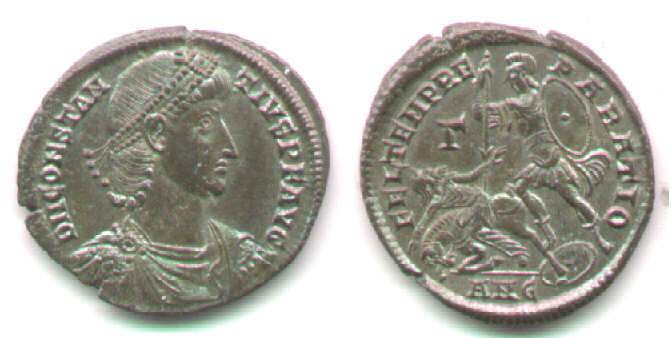
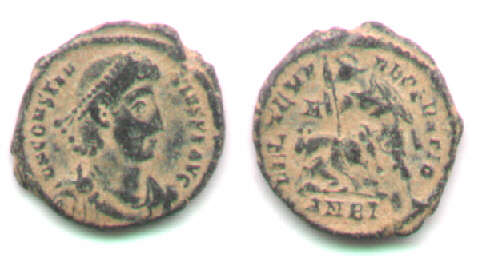


The offical "soldier spearing fallen horseman" type declines in diameter from about 24 mm at its initiation c. AD 348 to about 17 mm c. AD 361. Full-size AE24 imitations of the large issue are rare and medium-size issues are distinctly uncommon, but small-size imitations ranging from 17 mm down to tiny pieces below 10 mm are extremely common, especially in Britain.
Prototypes here: Large, AE25-23: RIC Antioch 132. 4:30.
"AD 350-355". The gamma in field left identifies it as from the
"first
series" (among three) in this time period. It therefore dates c. 350-1.
It is the same size and weight as coins from the first issue dated
"348-350."
Small, AE17: RIC 191 "AD 355-361" [the last issue of this type
before Julian II.]

AE22-21. 8:30. 4.99 grams.
Constans
DN CONS ....NS [with "N" and "S" backwards]
/FEL TE-EPIIRIITIO [approximately] These are
legilbe letters, not just letter-like forms. This contrasts with the
next
coin.
/PAR in exergue
Prototype: RIC Arles cf. 103, 105, 123 for Constans but reverse
closer to 133 (photo), however no "A" in either field.
Bruck, p. 16, says official types always have an "A" on the obverse.
Sold to me with the note "Probably from a Romano-British site" and
I agree.

AE22-21. 12:00. 4.20 grams
Constans
Very obscure legends. An attempt at letter-like forms. (This contrasts
with the legible lettering on the previous coin.) Behind the bust is an
"A" like form, which is on coins from Western mints. The obverse
legend seems short, which suggests the prototype was Constans rather
than
Constantius II.
/soldier spearing fallen horseman is rather well
done
/Star behind soldier in right field.
/exergue illegible
Reference: Mabbot 4753 is Constans, and 4761 is similar.
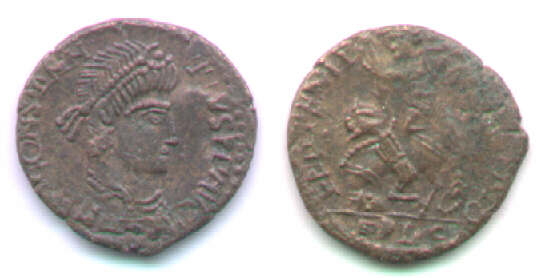
AE19. 3:00. 3.01 grams.
Good lettering. Much weakness on the reverse 1:00-4:00.
in exergue: [possibly E]PLC
Prototype: Lugdunum
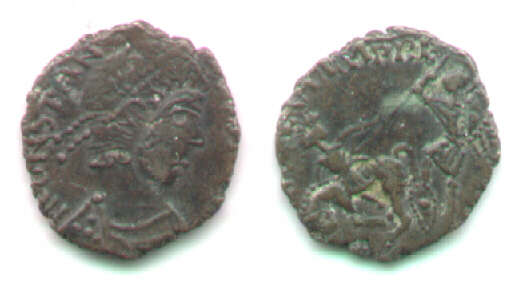
AE19-18. 6:00. 4.60 grams.
Ragged flan.
N CONSSTAN [TIVS PF AVG] (the initial D appears to be missing)
/[FEL T]EMP RE[PARATIO]
The mintmark, if any, is off the flan.
Cf. Bastien ANSMN 30, #27, 28.
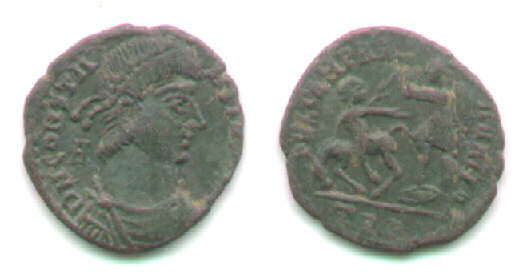
AE18. 7:00. 2.01 grams.
An imitation in good style, not far removed from official style.
However, the legend break "A-N" is not official. The "A" behind the
head belongs to the previous, larger (AE22-20) issue, and the style is
slightly odd, especially the nose and horseman.
/FEL TEMP RE-[ ]TIO There
may be a letter (the "P") that failed to be engraved.
In exergue: TRP
Prototype: RIC Trier page 167, size of 358 but "A" from 350.
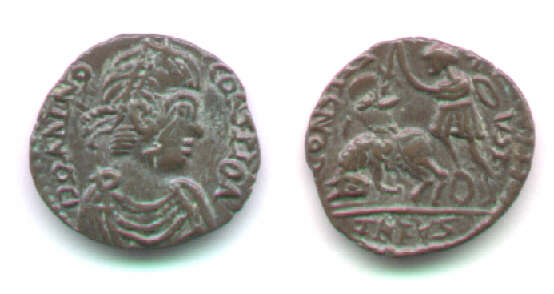
AE18. 1:00. 2.18 grams.
A very rare instance of DOMINO
being spelled out on the obverse
DOMINO CONSTIOA, diademed,
draped and cuirassed bust right. The engraver
must have been somewhat literate. DOMINO is spelled out which never
happens
on official obverses.
/CONST....VST, approximately.
Constantius
Gallus (Caesar 351-354)
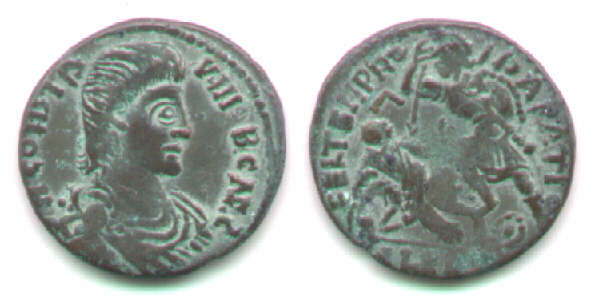
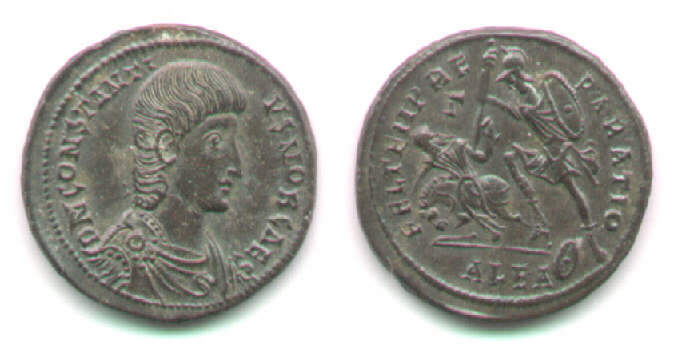
Imitation: AE21. 12:00. 4.07
grams.
Prototype: (large example) AE24-23. 6:00. 6.14 grams.
A (nearly) full-sized imitation in good style with some crude
lettering.
DN CONSTA-NTIVS NOB CAES attempted, with some successful
letters, bare head of Gallus right
(The bare head allows us to distinguish even worn pieces of Gallus
from those of Constantinus II.)
/FEL TEMP R-EPARATIO attempted with many
recognizable
letters. Gamma (tilted) in field left.
/ALED mintmark
Prototype: Alexandria mint. RIC Alexandria 74, March 351 to Winter
354. Sear 4055.
Imitation: Ex Vecchi 15, lot 1656.
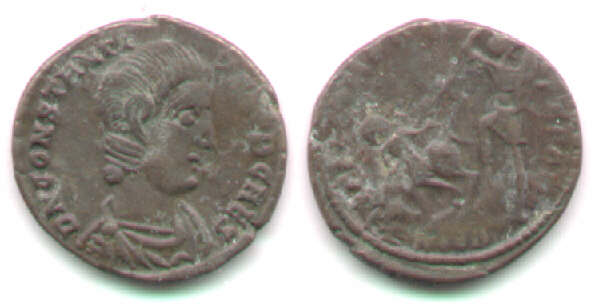
AE22. 12:00. 4.89 grams.
Another full-sized imitation. Excellent obverse and weak reverse.
DN CONSTANTI-VS NOB CAES, very well lettered, his bare head right
/FEL TEMP REPARATIO attempted, but the strike is
very weak. No letter in field.
/in exergue: ALEB
Prototype: Alexandria mint. RIC has no such combination of
control
marks for Gallus, but the previous issue for Constantius II (RIC Alex
44,
page 541) has this except for the lack of shield on the ground. RIC
Alex
81 is similar (see the plate for #80), but much smaller.
Ex Kovacs, 1986.
I have not seen a small-size imitation for Gallus. A bare head would characterize it. The two above are eastern, not British, imitations, and eastern imitations are much rarer than British examples. Apparently only the western imitations were produced in the much-reduced sizes so commonly seem in Britain.